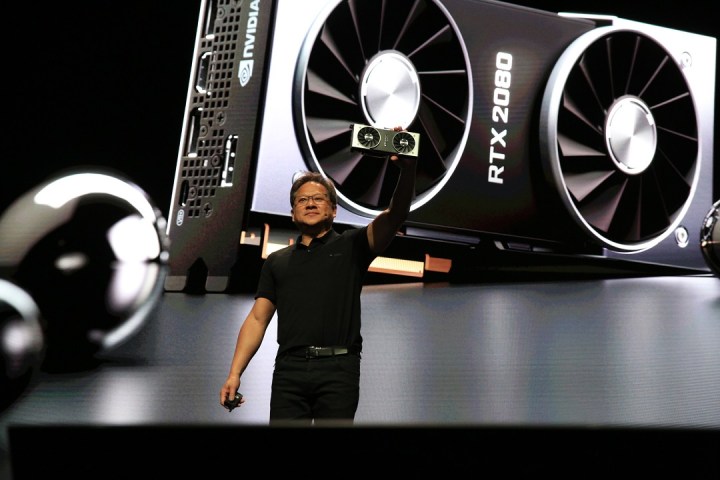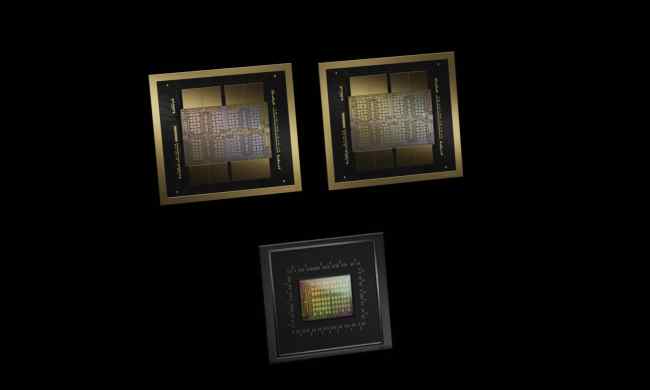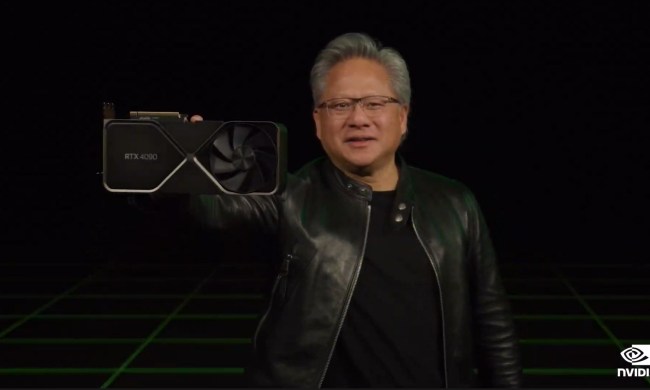To the delight of the enthusiast gaming community, Nvidia finally announced its GeForce RTX 20-series GPUs at Gamescom. In many ways, these GPUs are everything we’ve all been waiting for, showcasing powerful technologies like real-time ray tracing, dedicated tensor and RT cores, and a densely packed array of transistors on the new Turing architecture. Nvidia claims these new cards, which range from $500 to $1,200, perform at six times the level of the company’s previous graphics cards.
But no matter how large the leap forward is, these new GPUs won’t matter for the majority of PC gamers. Unless you were planning on upgrading this fall anyways, there’s not a big incentive to go and pick up these cards for at least a couple of years.
Limited games
The highlight of the GeForce RTX series is its ray tracing capabilities. This highly-anticipated feature is now finally available for the first time ever on consumer graphics chips — that’s according to Nvidia CEO Jensen Huang during his keynote presentation in Germany. In short, ray tracing brings real-time processing of lighting to scenes in a game, bringing cinematic effects to gameplay by showing how reflections, lights, and shadows in up to 4K resolution. Nvidia partner Electronic Arts demonstrated how ray tracing can be enabled in a game to show the reflection of a burning fire on the side of a car door in a demo of Battlefield V. The results are noticeable and present a serious step in the journey toward photorealism.
But even if ray tracing is the holy grail of graphics technology, its impact on gamers will be more limited, at least in the beginning. The technology certainly looks promising, but the reality is that only a limited number of games will come with ray tracing support this year.
You likely won’t notice much of a performance improvement for most real-world tasks.
Given that most of the most popular games on Steam are older titles that run fine on even hardware with moderate power, the added power of Nvidia’s RTX 20 series may be overkill. Unless you’re one of the very few people who are pushing the envelope with high frame rates in 4K resolution, a lot of the power of the RTX 20 series will be wasted. If you already own a higher-end Nvidia GTX 10 series graphics card, you likely won’t notice much of a performance improvement for most real-world tasks. That’s even truer if you primarily play competitive-style games where detailed shadows, lights, and reflections aren’t game-changers.
Over time, as developers add support for ray tracing, the content may grow. But like a technology like DirectX 12, don’t expect Nvidia’s vision to be fully realized at the onset. We’re talking years here — not months.
Virtual reality is still not fully a reality
Another benefit that Nvidia was promoting with the RTX GPU is better support for virtual reality. The company is pushing the VirtualLink standard that allows VR headsets to connect to the PC with just a single USB-C cable. This will lead to a simpler experience out of the box for users looking to adopt VR, but it’s always possible that not all manufacturers will support this feature.

In a report from CNET, it’s pointed out that even though all cards with the Turing architecture have the new VirtualLink specification, that doesn’t mean manufacturers will actually provide the USB-C and DisplayPort 1.4 port for 8K video.
Gamers who purchase the RTX cards are buying into Nvidia’s vision for the future of graphics.
To take advantage full advantage of this, you’ll need to invest in a new VR headset that supports VirtualLink and wait for 8K VR content to arrive. Not only is that a far-off proposal, VR itself is still in its infancy. While it’s a use case for high-end hardware, most of the statistics show that interest in VR isn’t exploding the way it was supposed to.
Again, it’s a technology that has the potential to pay off in the long haul. As for now, you’re paying for something you probably won’t use.
Waiting may be worth it
When the new cards arrive, you may be able to find some deals on Nvidia’s GTX series, and that may be a better investment over the next few years unless you’re ready to upgrade all your peripherals to take advantage of all the advancements of the RTX cards. That means a new 4K gaming monitor, new VR headsets that support VirtualLink, and purchase new limited number of game titles that come with support for ray tracing.
At this time, gamers who purchase the RTX cards are buying into Nvidia’s vision for the future of graphics. But that future hasn’t arrived yet, and you’re making an investment up front for something that won’t immediately pay off. And given that this is the first generation of the consumer RTX card, you’re really making a blind purchase before seeing any real-world benchmarks and reviews. We still don’t even know how many tensor cores are on these RTX cards.
If you are already planning for an upgrade or a new system, it might not be a bad idea to pick one of these up. But for most people, the RTX 20 series will be overkill.



